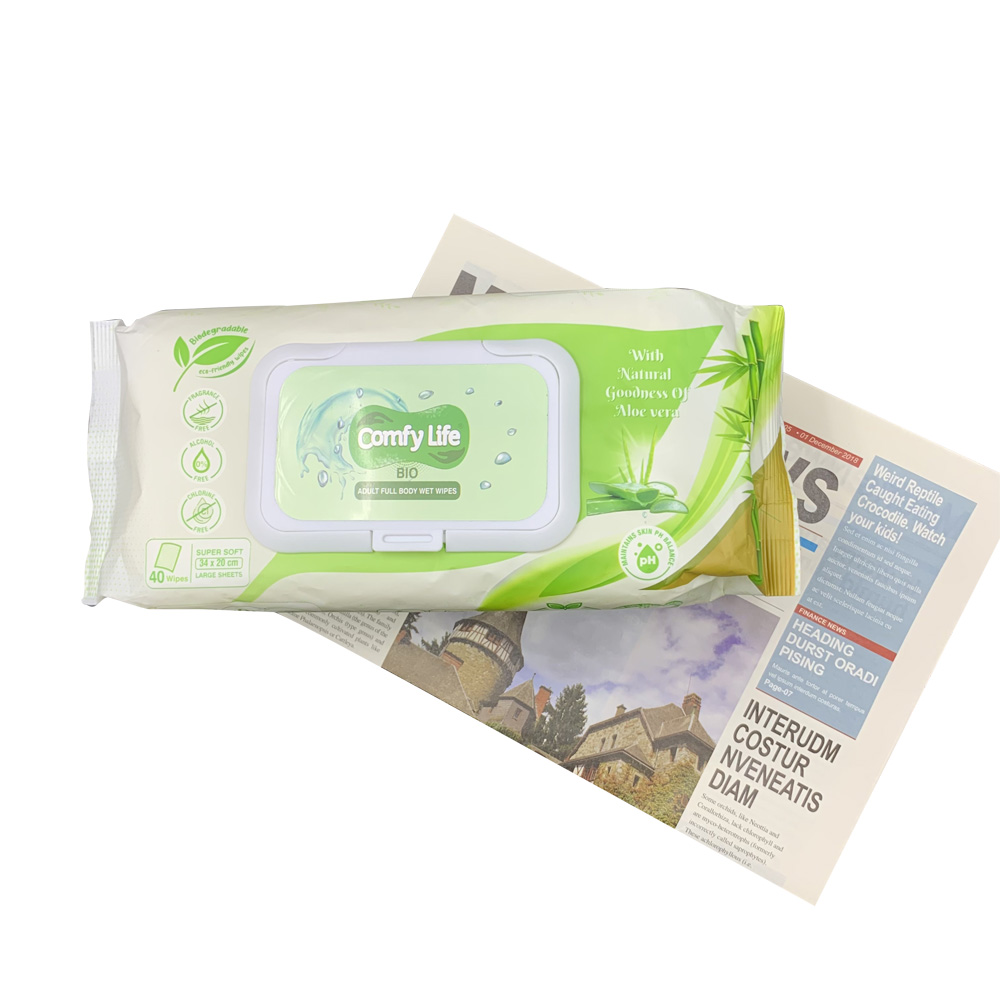Custom wet wipes can be made using a variety of materials, depending on the specific requirements and intended use of the wipes. Here are some commonly used materials for custom wet wipes:
Nonwoven Fabrics:
Nonwoven fabrics are a popular choice for custom wet wipes due to their absorbency, softness, and ability to hold liquid. They can be made from synthetic fibers (such as polypropylene or polyester) or natural fibers (such as cotton or viscose). Nonwoven fabrics are versatile and can be tailored to different levels of thickness, strength, and texture to suit specific needs.
Spunlace:
Spunlace fabric is a type of nonwoven fabric produced by entangling fibers using high-pressure water jets. Spunlace fabrics provide excellent strength, absorbency, and softness, making them suitable for various types of wet wipes, including personal care wipes, baby wipes, or cleaning wipes.

Meltblown:
Meltblown fabric is created by extruding molten polymer through small nozzles, resulting in fine fibers that are randomly laid and bonded. Meltblown fabrics offer high filtration efficiency and excellent liquid-holding capacity, making them suitable for wet wipes intended for disinfection purposes or medical applications.
Airlaid:
Airlaid fabric is made by combining pulp fibers with air and a binder, creating a loosely bonded, absorbent fabric that is soft and bulky. Airlaid fabrics are commonly used in industrial and household wipes, as well as in foodservice and hygiene products.
Cotton:
Cotton is a natural fiber that is soft, absorbent, and gentle on the skin. It is often used in custom wet wipes, particularly those designed for personal care or baby care, where a natural and hypoallergenic material is desirable.
Polyester:
Polyester is a synthetic fiber known for its strength, durability, and resistance to shrinking or wrinkling. It can be blended with other fibers to enhance the performance and properties of custom wet wipes, such as improving strength or reducing lint.
Composite Materials:
Custom wet wipes can also be made using composite materials, which combine different types of fabrics or materials to achieve specific properties. For example, a wet wipe may have a topsheet made of nonwoven fabric for softness and absorbency, while the bottom layer is made of a film or laminate for strength and liquid barrier properties.
The choice of material for custom wet wipes depends on factors such as the intended use, desired characteristics (such as softness, absorbency, or strength), regulatory requirements, and cost considerations. Manufacturers can work with their clients to select the most suitable materials that meet their specific needs and preferences for the custom wet wipes.